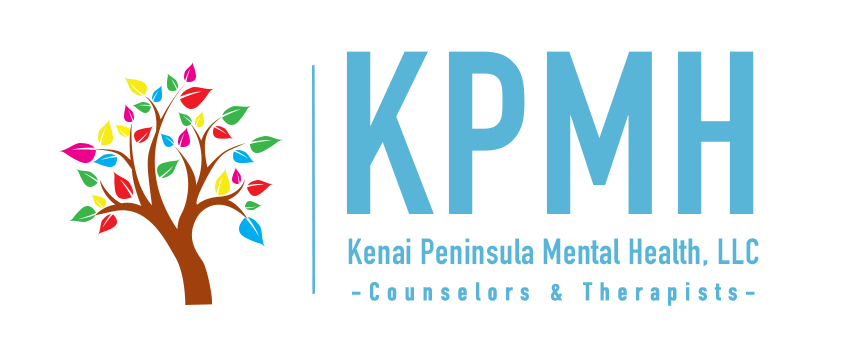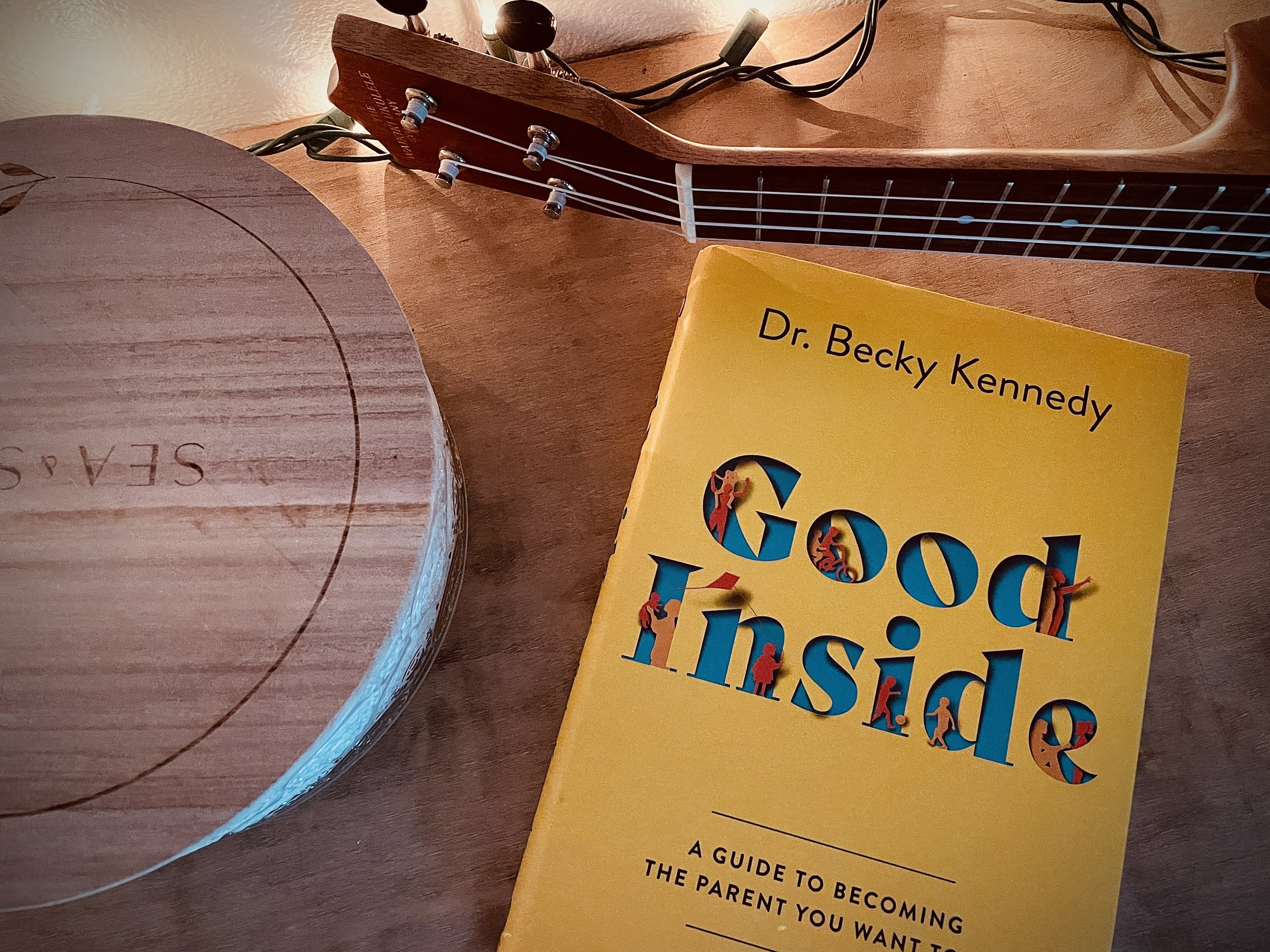Resources for parents and families on our waitlist: Good Inside, by Dr. Becky Kennedy - Chapter 2
Hello KPMH Fam,
Let’s just call a spade a spade; the waitlist struggle is real these days! I’m having conversations on the daily with people in Soldotna and Homer where I have to deliver the unfortunate news that we are weeks, and more recently, months out from being able to offer services to new and incoming clients. And we’re not the only ones! There is lots of need in many of our communities, and unfortunately, just not enough providers to take care of everyone. Quality professional child and family counselors are backed up to the gills with requests for help, and the wait required, when trying to get started in services, can be incredibly frustrating. I hear that, and as the owner of this business, I can tell you that I am working diligently to locate and hire the very best providers I can, so that they can care well for you!
In the mean time, however, I thought I would begin to offer some content that might help bridge the gap in the in between space. As an avid learner, I’m always looking for nuggets that resonate with me, or inspire me. Recently, I’ve come across the work of Dr. Becky Kennedy, and folks, she knows some things. Truly, her work integrates some of the best of the best in the field, and is incredibly consistent with what I teach my clients. I know your schedule is probably packed to the gills and the last thing you need is assigned reading, so I’m going to do the heavy lifting with you. Go get her book. It is a great resource.
I’m going to walking with you through a chapter by chapter breakdown of Dr Becky’s book, Good Inside, where I will outline the highlights of each. I want to outline for you the moments that are the most impressionable for me, and are the most consistent with the very information you would be getting directly from me, if we were sitting together in session. You might not be able to sit in the room with me or one of my clinicians for a few weeks yet, but I hope to be able to break down some concrete applicable nuggets that you can begin practicing today.
As always, if you or someone you know is struggling with any of life’s complex emotional struggles and challenges, please feel free to direct them our way. The heart and soul of this whole operation is taking good care of people, and we would be honored to do this work alongside you.
Mary’s Moments Of Impact: Chapter 1- Good Inside
The backbone of Dr. Becky’s book, Good Inside, is built on the fundamental belief that our children, even when showing us their most challenging behaviors, are fundamentally good kids having a hard time, rather than bad kids doing bad things.
---------------
For those of us that might have been raised from a more authoritarian, spare the rod spoil the child, buck up buttercup, teach them a lesson, perspective, as I certainly was, Dr. Becky addresses from the outset that the Good Inside parenting framework does not excuse bad behavior, or lead to permissive parenting. Rather, she states, “Understanding that we’re all Good Inside is what allows you to distinguish a person (your child) from a behavior (rudeness, hitting, saying “I hate you.”) Differentiating who someone is from what they do is the key to creating interventions that preserve your relationship while also leading to impactful change.” Pg. 4.
I love this. There is such generosity in creating space between someone’s actions, and the heart of who they actually are. I can certainly appreciate when someone affords me the generosity of that perspective. That perhaps, on my worst day, I’m not defined by an irritable mood or lack of patience. Doesn’t it make sense that we would see our children with the same grace, and recognize that they are little humans with far fewer skills to regulate their emotions and control their impulses? And that when they haul off and smack their sibling, perhaps it’s not because they’re a terrible tiny human, but because they have big feelings and high levels of impulsivity, that aren’t yet well regulated due to a little bitty prefrontal cortex that won’t actually be done developing until they’re in their mid twenties?
-----------------
“Many parents see behavior as a measure of who are kids are, rather than using behavior as a clue to what our kids might need.” Pg. 5
When your kiddo is struggling, this is not a reflection of your child as a “bad kid,” but a window into the fact that they are experiencing disconnection and dysregulation. If you can come alongside your child, even when they’re acting like a hooligan, and engage them from a place of connection, it is that sense of being tethered to you, and ok in your presence, even if they messed up, that allows them to be open to the intervention and feedback needed regarding the troubling behavior.
----------------
How our caregivers responded to us becomes how we in turn respond to ourselves, and this sets the stage for how we respond to our children.” Pg. 7
This is such an important piece of the puzzle in terms of understanding not only what we do, but why we do it. Generational patterns get passed down, and without an intentional effort to course correct, many of those patterns are simply perpetuated over time, and carried into the next generation. I love the saying “It ran in the family until it ran into me,” and that is exactly what is required to break generational patterns. Why are you reactive and yell and your kids? Well, there’s a good chance your parents were reactive and yelled at you. And that when you mess up, your own internal critic is a reactive one. And then when your kids mess up, that internal critic gets activated, and then yells at them, and so forth and so on. Understanding our own pattens is key in changing the patterns we set forth with our children.
-------------
“Finding the good inside can often come from asking ourselves one simple question, ‘What is my most generous interpretation of what just happened?” Pg. 8.
This. Is. So. Good. Dr. Becky refers to this as the MGI, the most generous interpretation. When our kid does something outrageous, as long as no one is bleeding in that particular moment, the best first thing we can do is slow our roll, take a breath, and give ourselves a beat to consider the most generous interpretation of what just happened. The biology of why this is helpful is deep and wide, and I’ll save it for session, but the cliff notes version is that if we can slow down for one hot second, we can engage from a place of presence, compassion, and curiosity, which gives us enough space to respond intentionally to our child, rather than to react. This is so crucial. A dysregulated adult cannot regulate a dysregulated child, so giving yourself a moment to consider a generous interpretation of what just played out, will allow you to engage your child from a place connection.
--------------
“Finding the MGI teaches parents to attend to what is going on inside of their child (big feelings, big worries, big urges, big sensations) rather than what is going on outside of their child (big words, or sometimes big actions). And when we put this perspective into practice, we teach our children to do the same. We orient them to their internal experience. Which includes thoughts, feelings, sensations, urges, memories, and images. Self-regulation skills rely on the ability to recognize internal experience, so by focusing on what’s inside rather than what’s outside, we are building in our children the foundation of healthy coping.” Pg. 10
Are you familiar with the phrase, “come to your senses?” That phrase is exactly with Dr. Becky is referencing in the paragraph above. Helping a child orient to their internal experience encourages them to focus on their senses, to come back into their bodies, and tune into what they see, hear, feel, taste, touch, smell. To consider their cognitions, their emotions, and the way sensation manifest in their body. As we attune to what is happening internally for our children, rather than focusing on the external, we teach them to do the same. We are giving them access to the rich, internal, emotional landscape of their experience, and as a result, giving them the keys to emotional intelligence. So, that’s pretty cool.
----------
“At all times, but especially when our kids are dysregulated, they look to their parents to understand ‘who am I right now? Am I a bad kid doing bad things, or am I a good kid having a hard time.’ Our kids form their own self view by taking in their parents answers to these questions. Pg. 10
and
“Kids respond to the version of themselves that parents reflect back to them, and act accordingly.” Pg 10.
Oh man, this really gets to the heart of it. Our kids are going to screw up. We are going to screw up. But when those that love us most can see us through a lens of love and connection and curiosity, rather than outrage and contempt, it changes everything. It allows us to reconnect and share the heart of what’s really going on, or at the very least be curious that something else might be going on, rather than just internalizing the belief that we’re bad. Because that kid that believes he’s bad, is going to behave in a way that is consistent with that belief. We have the power to change that story, and we do it by fundamentally believing that our children, as well as ourselves, are good inside, even when our outward behaviors aren’t so good.
————-
Go forth, and raise good humans. We got this.
- Mary :)

